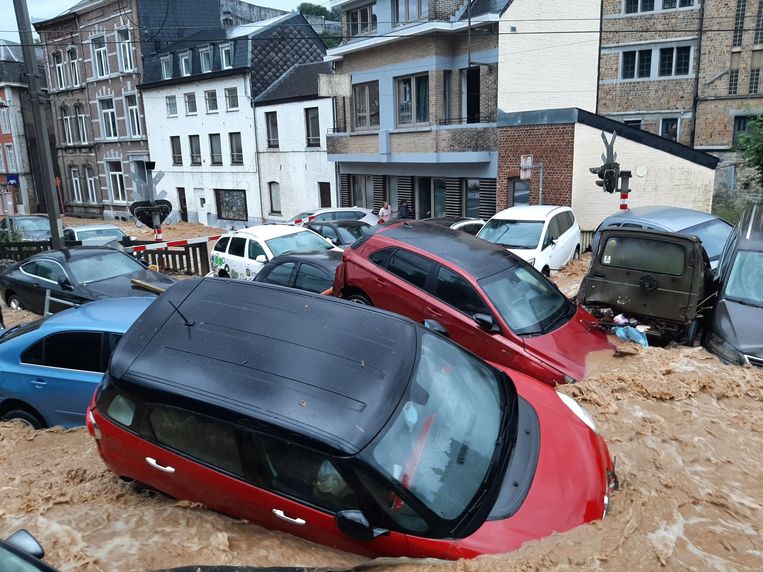As more floods ravaged certain regions in Belgium this weekend, which were still recovering from last week's heavy rainfall, people in the Walloon city of Dinant, on the banks of the Meuse, spent all of last night working to clear the roads.
The heavy rainfall washed away cars, leaving them strewn across the town, and caused damage to houses and other buildings, which required clearup works to start on Saturday, lasting throughout the night until Sunday, according to Deputy mayor Robert Closset.
"The available municipal staff was called back and we received help from some independent indviduals," he said.
"Some 20 trucks have already removed rubble and all the mud on the road had to be scraped off. We have also temporarily placed rubble where the road has broken up so that we can access the houses because there are elderly people in this area who need care," he said, adding that the town also needs help to unblock the drains on the municipal and regional roads.
Related News
- Heavy rain causes chaos across the land, with more to come
- Citizens' collective in flood-torn town to file charges against government for unintentional killing
- Flood warnings: Why was no action taken earlier?
The works to clear up the damage are expected to continue throughout the day on Sunday.
Videos shared on social media show how quickly the situation deteriorated and how the heavy rainfall flooded streets in the are.
"More images from Dinant, a strong current floods the streets again," the Tweet reads.
According to Closset, there have been no deaths or injuries as a result of the flooding, however he did say that the floods were worse than last week's.
The two rivers of most concern in Belgium, the Meuse and Sambre, didn't overflow during the floodings, however several streams did.
"The secondary streams, brooks and creeks have practically all burst their banks. But the Meuse and the Sambre have been contained," said Bernard Guillitte, head of the Namur provincial council presidency.
"It will also be necessary to adapt, as much the cultivation methods on the plateaux as the entire water drainage and retention network (stormwater basins, flood buffer zones, ditches), and to carry out a global reflection on urban planning and soil sealing," Guillitte added.
Meanwhile, the water supply had also been cut off on the left bank of the Meuse, which threatened to burst out of its banks during the first floods last week, amidst fears of the water becoming undrinkable.
A drinking water tap is available in the courtyard of the town hall. The municipal services are also mobilised to distribute water to people who are unable to mobilise themselves.
The local councillors met this morning to discuss the situation, and once the worst of the rainfall is over, several mayors of the affected municipalities intend to carry out an examination of the territory and identify all the problem areas.
Other recovering regions
In Dinant's northern neighbour, Namur, firefighters are also working tirelessly to combat the damage made by the floods, and are mainly focussing on pumping out water and placing sandbags.
Meanwhile in the province of Liège, which was heavily affected by last week's disaster, rivers are not expected to overflow significantly this weekend and according to officials, there is no need to evacuate the area yet, as was done last week, when residents of the city Liège were told to flee.
In the province of Antwerp, the soil and the water basins are already saturated by the heavy rainfall, and every additional drop could be too much, according to the governor of the province of Antwerp, Cathy Berx.
Germany, where around 180 people were killed in last week's floods, has remained mostly spared from the last heavy rainfall, as only the south of the country experienced limited flooding.

